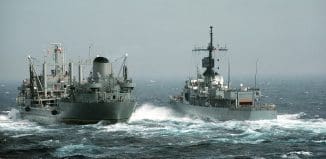Crewless Drone Ships Will Ply The Seas By 2020
This post is also available in:  עברית (Hebrew)
עברית (Hebrew)
Rolls-Royce is predicting that in just four years, crewless “drone ships” will be sailing the seas with no crew on board. The aircraft engine manufacturer is leading an alliance that seeks to develop the technology for ships remotely controlled from “virtual bridges” based on land. This, the company claims, will makes them much cheaper to run.
“This is happening. It’s not a question of if, it’s a question of when,” said Oskar Levander, head of innovation for Rolls-Royce’s marine unit. “We will see a remote controlled ship in commercial use by the end of the decade.”
Levander compared the project to a sea-based Uber, saying it could revolutionise the shipping sector.
“Drone ships will allow the creation of new services, which will support existing players to make their businesses more efficient and enable new entrants with new business models to the sector, with a potentially similarly disruptive effect to that caused by Uber, Spotify and Airbnb in other industries.”
Rolls-Royce is working with Inmarsat, a British satellite communications company; Tekes, Finland’s technical research agency; DNV GL, an international marine certification body; and Deltamarin, a Finnish offshore engineering firm.
Individual technologies for autonomous sea vessels already exist, said Levander, but the Advanced Autonomous Waterborne Applications project seeks to bring them together, overcome legal barriers, and thoroughly test the vessels at sea.
The ships will rely on a variety of sensors, from radar to lasers, to pilot themselves, with the aid of computer algorithms. Land-based navigators and captains will take over if and when needed.
Rolls-Royce predicts that crews will be stationed around the world to be transferred to ships by helicopter if trouble arises that is too complex to be handled remotely.


























